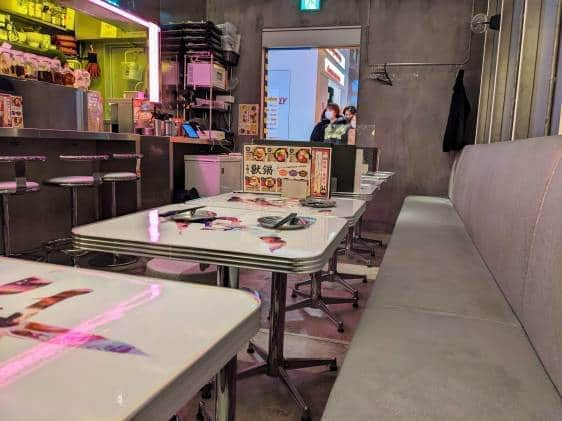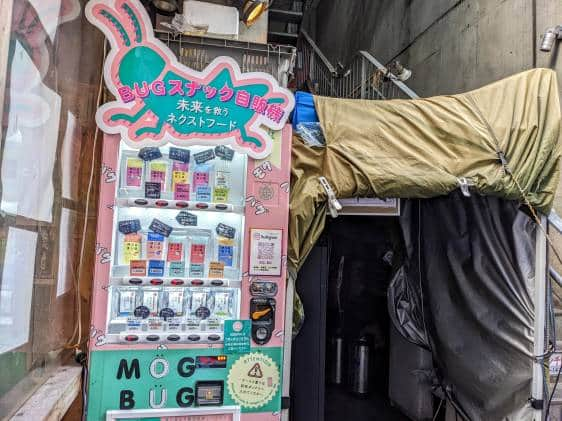Eating insects is an everyday occurrence for many cultures around the world, and if you find it bugs you, then you might be the odd one out. In fact, in recent years, there’s been an upward trend in insect-focused cuisine in Tokyo. Where does this spike in popularity come from? Is it the rise in sustainable food alternatives? Or do people just want to eat something more… thrilling?
Ready to get into the nitty-gritty of entomophagy, the scientific name for eating insects? We’ll cover the history of entomophagy in Japan, what insects are good to eat and where to find them in Tokyo, plus some industry insight into the growing trend.
Why do people eat insects in Japan?

Like many cultures, Japan has a history of insect eating. During the poorest eras of Japan’s history, bugs were eaten because they were cheap, produced a quick source of protein, and were readily available in places heavy with agriculture. Rice grasshoppers, as you can probably imagine, were common pests.
Insects are still eaten in modern-day Japan, just not at the rate they once were. For example, a specialty of some regions outside of Tokyo is inago no tsukudani, locusts simmered in soy sauce and sugar or mirin (sweet cooking sake). Don’t knock it till you’ve tried it! The dish is still eaten and sold as a souvenir in places like Gunma, Nagano, and Gifu — all mountainous areas that historically had limited access to seafood. Tsukudani, meanwhile, is a style of food preparation (simmering with soy sauce and sugar or mirin) that makes perishable ingredients last longer.
What insects are eaten in Japan?
Other insects are also made into tsukudani and other unique local dishes. There’s an appetite for all kinds of bugs in Japan, but these are the most common:
- Locusts and grasshoppers (イナゴ・inago)
- Crickets (コオロギ・kōrogi)
- Bee larvae (蜂の子・hachinoko)
- Maggots (蛆・uji)
- Silk worms (蚕・kaiko)
The current trend for edible insects in Tokyo
The days of eating locusts to fill you up after a harsh winter are gone. Instead of traditional dishes, insects are now marketed to the masses predominantly as pre-packaged snacks. These are usually manufactured in a way that makes the original ingredient inconspicuous. An example of this is in the many cricket senbei (rice cracker) products now found in shops like Muji.
That’s not to say you won’t see whole insects crouching on the side of a plate or hanging off a glass of cider in specialized restaurants; but here, they are mainly used as a garnish — or in some cases, to shock.
Why are Tokyoites eating more insects?

There are different reasons for this change. Companies claim new AI technology means breeding insects — mainly crickets — for consumption has become easier, more environmentally friendly, and cost efficient (you don’t have to feed teeny tiny insects much), while individuals claim health benefits and the desire to try something new.
We talked with Mr. Kondo from the Japanese company T.I.S., which specializes in edible insects. (T.I.S. has an online shop, vending machines, and an in-person store in Ueno, which we’ll get to in a minute). He credits consumer interest for the growing trend: “There are those who are interested in trying newer food options,” he explained.
However, he also lamented that the market remained largely driven by customers “purchasing unique products out of curiosity.”
As you can probably imagine, restaurants and shops specializing in edible insects are often visited as a dare — or a punishment. On the brighter side, according to Kondo, the number of people becoming addicted to this new source of food is slowly increasing.
What are the real benefits of eating insects?
Compared with livestock farming, which has been proven to harm the environment, rearing insects uses less water and land. Plus, the smell is a lot nicer. Although further research is needed on the environmental benefits and practical uses, we could all be chowing down a lot more insects in the future.
In addition to having a low impact on our environment, insects themselves are rich in protein, minerals, and Omega-3. Some insects like crickets have more iron — 180% more — than beef.
Where to eat insects in Tokyo

Ready to taste the future of food for yourself? We’ve got all the details on where to find cafes, restaurants, and even vending machines that serve up edible insects.
Restaurants and cafes
From casual takeaway counters to multicourse meals, Tokyo has a wide variety of konchū-shoku (entomophagy) spots.
Mushi-ya
The first spot on our list is also the most casual — the place to go if you just want a quick sample. Mushi-ya, which opened in December 2022, is an open-air stall in Ameya-Yokochō Street Market in Ueno. It offers grab-and-go dishes such as cricket and silkworm skewers or ice cream with sago worms. You can also get bug-themed alcohol and soft drinks.
Take-Noko
Take-Noko is a simple cafe that sells edible insect dishes and drinks. It’s not far from Asakusa, in a traditional Japanese house. Sample menu items include: waterbug cider, bee lemon soda, and silkworm tea; on weekends and holidays, there are also cricket-laced pasta dishes. There are often new and collaborative dishes, as well as events celebrating arthropods.
Rice & Circus
Rice & Circus doesn’t just offer “small” bites; it has a menu of interesting and unique — at least for Japan — meats, including venison, rabbit, crow, and crocodile. But if we’re focusing on creatures with more than four legs, then there are plenty of those, too. On a recent visit, we tried the insect dango (rice flour dumplings) with maggots, locusts, and bee larvae sprinkled on top. We especially enjoyed the locusts, which were made in the tsukudani style.
The original Rice & Circus is in Takadanobaba, but there is also a branch in Kinshichō and, conveniently, in the basement of Shibuya Parco.
Antcicada
This is probably the classiest restaurant on our list. It’s also one of the smallest, with only 12 seats that face an open kitchen. On Sundays (and only on Sundays), Antcicada serves their signature cricket ramen, which will set you back a swallowable ¥1,100. A course menu is served in evenings; this is a much steeper ¥11,000, but you are treated to wild game on top of the bugs. They also have an online store if you care to try their dishes at home.
Insect vending machines in Tokyo
Vending machines are ubiquitous in Tokyo and finding one that satisfies your incy-wincy craving isn’t difficult.
There’s the MOGBUG vending machines in Takadanobaba and Akihabara — don’t be fooled by the cutesy pink exterior. Meanwhile, T.I.S. has machines in many places around Tokyo, including Nakano Broadway, Kichijōji, and Ueno.
Ordering insects to eat online
If you want to sample insects without having the peer pressure of a public setting, then it may be worth going online. Many manufacturers, which make a whole range of insect products, have online stores.
- Konchū Shoku (T.I.S.)
- Takeo
- Bugs Farm
More places to shop for insects in Tokyo
- Convinience stores: There are cricket cookies and snack bars in Family Marts in Tokyo, including in Toranomon and the Tokyo Metropolitan Government Building. At the moment, at least.
- Muji: Muji has been selling cricket chocolate and crackers online and in-store.
Want to see what other food and drinks Japan has to offer? Check out our dedicated page on the subject and find something new to eat.
While we do our best to ensure it’s correct, information is subject to change.







































